ICSI is a common technique used in an IVF treatment cycle to fertilise eggs. ICSI increases the chances of fertilisation by directly injecting the sperm into the egg. The fertilised eggs (embryos) are then transferred back to the womb of the woman through a fine tube called a catheter.
Why Do I Need Fertility Treatment?
ICSI is usually recommended when male-factor fertility issues are involved, and patients are unable to conceive through conventional IVF. In such cases, the sperm is usually not strong enough to penetrate the egg by itself to achieve fertilisation. By injecting the sperm directly into the egg, the chances of fertilisation are greatly improved. Specifically, ICSI can help men with:
- unusual sperm test results or semen analysis
- sperm-related issues such as low sperm counts, reduced motility and high rate of abnormal forms
- absent or damaged vas deferens (sperm passage
- surgery for an undescended testicles
- injury to the testicles
- retrograde ejaculation
- Immunological factors (e.g., a high count of white blood cells (WBC) in the semen)
- Irreversible vasectomy or no sperm in the semen
How Long Does It Take?
Long-protocol ICSI treatment typically takes about nine weeks from your initial nurse planning appointment to the time you receive the results of your pregnancy test. For the entire process, you’ll make about six visits to our clinic. Short-protocol ICSI, as the name suggests, is a quicker process that takes about five weeks. During this time, you’ll make a total of five visits to out clinic.
(Please note, every person we treat will have different requirements and might take longer than stated above.)
Short and Long Protocol
Just like IVF, there are two types of ICSI – long and short protocol. Most patients typically undergo long-protocol ICSI, since there’s more control over the entire process from start to finish. Short protocol ICSI (also known as antagonist cycles) is usually prescribed for patients with special conditions such as polycystic ovarian syndrome. This is done to reduce the chances of ovarian hyperstimulation (OHSS) – a typical side effect of ICSI treatment.
The Six Steps Of ICSI Procedure
The ICSI procedure shares the same steps with conventional IVF, with the only difference is how the egg is fertilised.
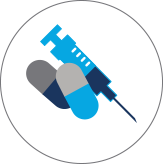
1. Suppressing The Natural Cycle
Upon commencement of the treatment, the woman’s normal cycle is suppressed by administering special hormonal drugs. This drug can be self-administered daily and will be used for two weeks.
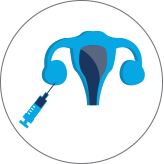
2. Increasing The Egg Supply
Once your natural cycle is suppressed, you will be given a drug containing follicle stimulating hormone (FSH) which will significantly boost egg production. This will be taken for approximately 12 days and will be administered as daily injections.
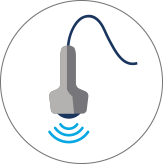
3. Ultrasound Scan
The progress of your drug treatment will be monitored through periodic ultrasound scans and blood tests. This is to ensure that your follicles (the sac that contains eggs) are growing as expected. At 34-38 hours prior to egg collection, you will receive an injection of (HCG) which helps the eggs to mature.

4. Egg Collection (Transvaginal Oocyte Recovery)
Upon egg maturation, the eggs are collected from the follicles with the aid of a fine needle attached to the ultrasound probe. This procedure takes place under sedation. While egg collection is going on (or prior to the time), a sperm sample is collected from the male partner. If sperm has been stored previously or donor sperm is being used, this will be thawed. Our expert embryologists then select the best sperm for direct injection into the egg.
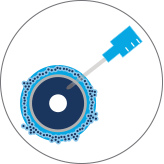
5. Fertilising The Egg
The selected sperm is injected with the aid of a fine glass needle, into the middle of the egg, thereby greatly increasing the chances of fertilisation. However, it is worthy of note that sperm injection doesn’t guarantee fertilisation. There is also a 3% chance that eggs may be damaged. The average fertilisation rate for ICSI is 70%, and it depends mostly on the maturity of the eggs and the extent of the sperm disorder. Once fertilisation takes place, embryos are grown for 5-6 days in the incubator, before preparing the best-performing one for embryo transfer.
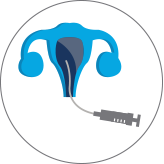
6. Embryo Transfer (ET)
For this procedure, a speculum is inserted into the vagina in order to visualise the cervix. A specially designed thin tube called a catheter is then passed through the cervix into the womb, to transfer the selected embryo.
Our Patients
Say About Us
Liza and Alex
“Everything went so smooth, the staff were so supportive and friendly, they made me feel I was in safe hands throughout.”
Why Choose

Families are at the centre of our lives and for many of us there is nothing more important than having a family of our own, however for 1 in 7 of us the dream of becoming parents cannot be realised without specialist support.
Here at Oxford Reproductive Medicine, we understand how confusing and emotional this reality can be, so we combine the highest levels of personalised patient care with access to the country’s premier treatment centres.
We bring premier UK centres in reach of those who want the best treatment. Our team of experts will manage the majority of your treatment at a local centre leaving you to choose which of the UK’s leading clinics you would like to complete the collection and implantation.


